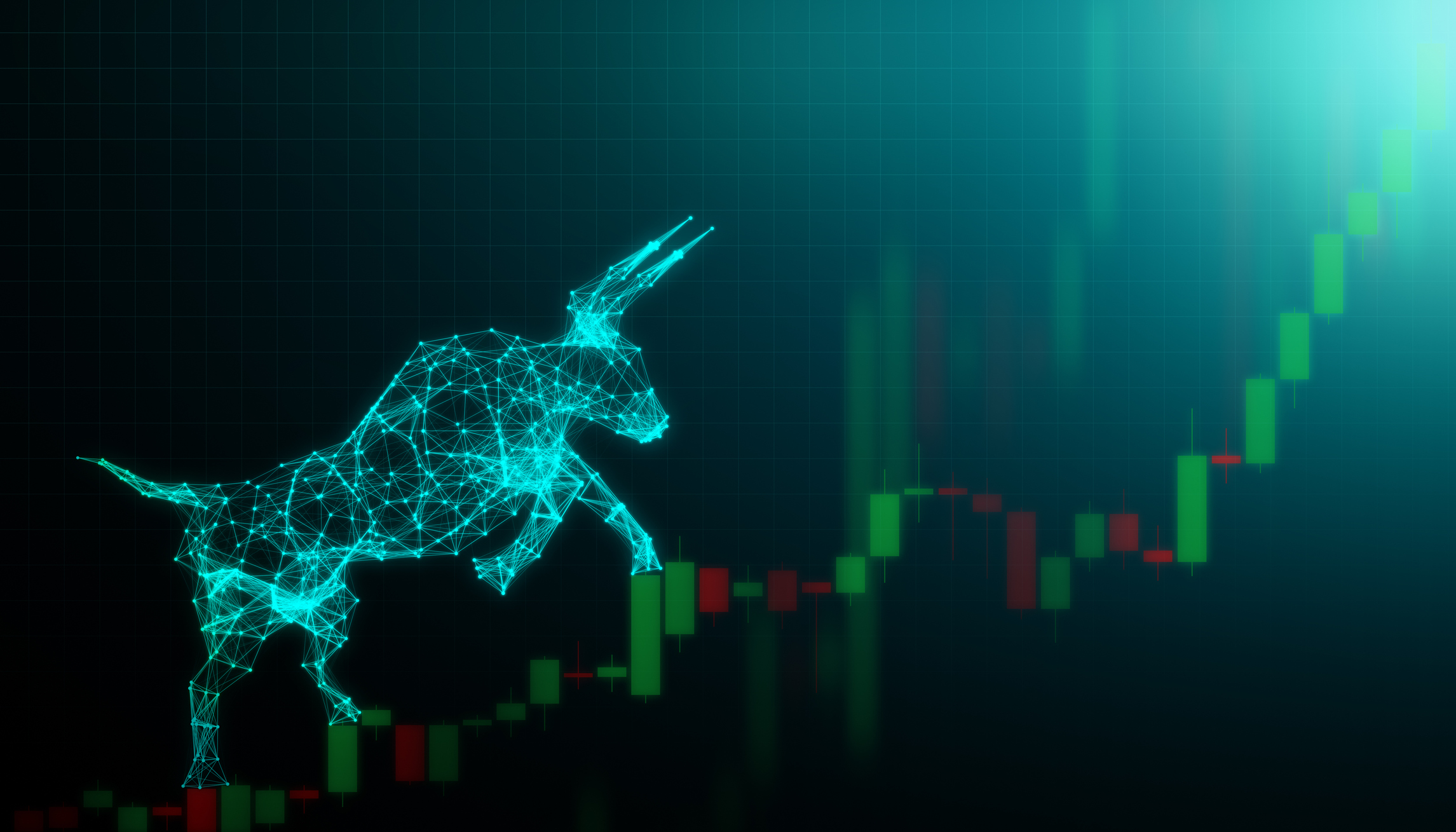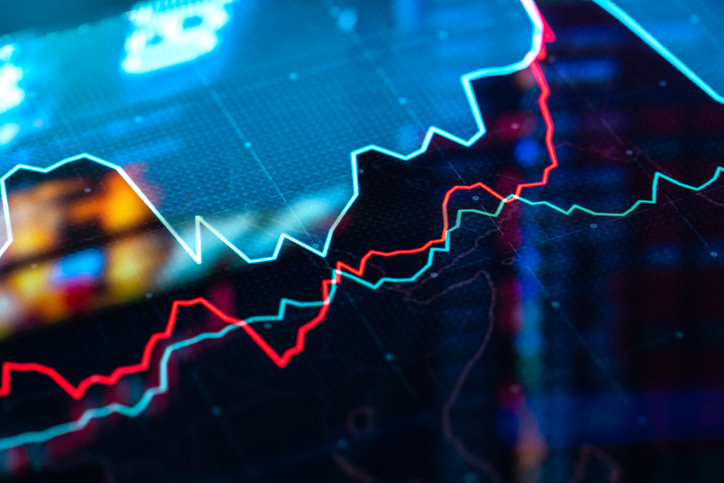7 Bargain Stocks in Today's Pricey Market
Investors can rummage through the cheapie bin, looking for stocks with ultralow price-earnings ratios.


Investors can rummage through the cheapie bin, looking for stocks with ultralow price-earnings ratios. But buying so-called deep value stocks isn’t for the faint of heart: Their shares tend to be inexpensive because of a downturn in their business, and they may not rebound soon.
Yet bargain hunters aren’t entirely out of luck. Banks and other financial firms, for instance, trade at an average 36% discount to Standard & Poor’s 500-stock index, based on the stocks’ book value (assets minus liabilities), according to Bank of America Merrill Lynch. Some media companies also look inexpensive, along with technology firms that aren’t as pricey as the stars of the tech world but still have strong prospects.
The following seven stocks are bargains you can bet on for the long term. Our picks are profitable and leaders in their fields, but their shares trade at reasonable prices because of pressures in their industry or company-specific challenges. Eventually, we think those issues will subside. And for now, investors can buy these stocks at an attractive discount to the broad market or to industry averages. That should help set up strong returns, even if the stocks’ prices rise only enough to get back to long-term average valuations.
Disclaimer
Data is as of December 8, 2017. Sources: Thomson Financial, Yahoo Finance, Zacks Investment Research. Earnings per share are based on estimated earnings for the next four quarters. Stocks are listed in alphabetical order. Click on symbol links in each slide for current share prices and more.

AMC Networks
Market value: $3.3 billion
Earnings per share $6.86
Price-earnings ratio: 8
Breaking Bad. Mad Men. The Walking Dead. All three shows have been huge hits for AMC Networks (AMCX, $54), which runs them on its AMC cable channel. The Dead, a zombie series now in its eighth season, remains one of the biggest non-sports shows on cable, averaging about 8 million viewers for new episodes this season.
Yet AMC’s stock has been stumbling like a zombie, wallowing at 21% below its 52-week high in a market that has been rising. AMC shares trade at eight times estimated earnings for the year ahead, less than half the market’s average price-earnings ratio. AMC also looks like a bargain compared with media stocks that are more in favor with investors—such as Time Warner (TWX), trading at 14 times earnings.
The market appears to be spooked by several factors haunting AMC. Although viewership for the Dead remains strong by cable-TV standards, its ratings have been sliding for more than two years, pressuring AMC’s ad revenues. The network’s other shows, including spin-offs of Breaking Bad and the Dead, are faring well but aren’t nearly as popular as the originals.
More broadly, AMC is competing against more high-quality scripted shows on other cable channels, and against streaming services, such as Netflix. Analysts also worry about a gradual decline in cable subscriptions, squeezing the fees that cable service providers pay networks such as AMC to carry their channels.
- Yet the bullish case for AMC looks compelling, according to Wells Fargo Securities, which recently recommended the stock. AMC’s channel lineup also includes BBC America, IFC, Sundance and WE. Subscriptions to those channels are growing, bucking the industry trend. AMC charges cable operators relatively low fees to carry its channels, delivering “huge bang for the buck,” says Wells.
AMC’s shows, meanwhile, still attract some of the biggest audiences on cable. Its scripted dramas remain popular with 18- to 49-year-old viewers—a coveted demographic that advertisers can’t reach on ad-free streaming services or premium cable channels such as HBO. Moreover, the Dead should remain a solid revenue producer, with a long afterlife on subscription video services and international markets.
Last, AMC has a solid balance sheet with low debt in relation to its cash and earnings. And the stock could be a takeover target. Applying a similar value to what Discovery Communications (DIS) recently paid for Scripps Networks, AMC would fetch $96 per share, estimates Wells. Even assuming 5% annual declines in ad revenues over the next few years—an unlikely, dire scenario—the stock would still be worth $48, Wells says, only slightly below recent prices.

Goldman Sachs
Market value: $94.9 billion
Earnings per share $20.40
Price-earnings ratio: 12
Warren Buffett plowed $5 billion into Goldman Sachs (GS, $250) in 2008, seeing great value in Wall Street’s premier investment bank when it was on the ropes during the Great Recession. Goldman’s business has rebounded handsomely since then. But the stock still looks reasonably priced at 12 times estimated earnings. By comparison, large financial companies, including banks, brokerage firms and insurers, trade at an average P/E of 15.
- Goldman’s stock trades at a discount because the firm’s business is inherently risky. Goldman’s traders make huge bets on bonds, stocks and anything else that can be swapped for gain. Profits from trading, a major source of revenues, fluctuate wildly. And a downturn in financial markets could be devastating, wiping out years of profits and invested capital (and leaving its army of bankers with little to do if deal-making were to dry up).
- Steeper interest rates would also help Goldman by increasing its net interest income (the difference between the rate at which a bank lends and the interest it pays on deposits). Net interest income now accounts for about 9% of Goldman’s revenues. That could increase substantially as rates rise modestly.
Yet Goldman is diversifying away from risky Wall Street business to more traditional financial services. The company recently outlined plans to produce $5 billion in additional annual revenues from new ventures, such as online banking and lending to consumers, including a business to help people pay off high-interest-rate credit card debt. The firm now manages or supervises more than $1.4 trillion in client assets, up by $310 billion over the past three years. Goldman is also selling more mutual funds and exchange-traded funds, and a low-cost “robo” advisory service, focused on ETFs, is reportedly in the works.
Two other trends make Goldman appealing. One is the potential for regulators to ease up on some of the rules governing how big banks operate and make money. Goldman, in particular, would benefit from a loosening of the so-called Volcker rule, which places restrictions on banks trading for their own benefit (as opposed to solely for the benefit of clients).

Hologic
Market value: $11.8 billion
Earnings per share $2.11
Price-earnings ratio: 20
A leader in medical technology for women’s health, Hologic (HOLX, $43) makes imaging machines and devices to detect breast cancer, potential premature births, sexually transmitted diseases and other medical conditions. Sales have been rising slowly but steadily. But Hologic’s stock has been anemic, returning just 9.6% over the past year—far behind the 32% gain of the iShares U.S. Medical Devices ETF (IHI), a broad-market basket of health-device stocks.
Hologic should rebound, though. The firm has been hurt by weak sales at Cynosure, a company it acquired early in 2017 for $1.4 billion. Cynosure makes fat-blasting lasers that can sculpt tummies, thighs and other body areas, remove tattoos, and revitalize scarred skin. The merger didn’t go smoothly, as some of Cynosure’s sales force departed during the handover to Hologic. But a new executive, who revitalized Hologic’s international business, is now in charge of Cynosure. And growth should rebound as a new sales team takes over.
Hologic’s diagnostics and imaging businesses are faring well. The firm dominates the U.S. market for 3-D mammography machines, which it says can boost the detection rate of invasive breast cancer by 41% compared with 2-D imaging. Sales of those machines aren’t increasing much in the U.S., where Hologic already controls about 60% of the market, but they are rising rapidly overseas. Hologic’s molecular diagnostic business is thriving, too, with machines that can test for a wider variety of STDs. And the firm is developing more women’s health products and testing services.
- Hologic’s stock may be flat in the near term, mainly because it will take time to revitalize Cynosure. But the business looks like a long-term winner: The market for aesthetic cosmetic procedures is now worth more than $2 billion in global annual sales, Hologic says, and is growing by more than 10% a year.
At 20 times earnings, the shares trade well below the P/E of 34 for the iShares ETF, providing plenty of upside for investors if Hologic can edge its way closer to the industry average.

Intel
Market value: $202.9 billion
Earnings per share $3.23
Price-earnings ratio: 13
The rap on Intel (INTC, $43) is that it’s chained to the flatlining world of personal computers. The company’s PC-centric chips account for more than half of its annual revenues, which is why the shares trade at just 13 times estimated earnings. That is well below the average for sizzling chip makers such as Nvidia (NVDA), a firm that makes processors for self-driving cars and high-end graphics applications, giving its stock a nosebleed P/E of 43.
Yet Intel isn’t just a chip maker for PCs anymore. The firm bought Israeli chip maker Mobileye in 2017, paying $15.3 billion for a global leader in sensors and mapping technologies for self-driving cars. The deal plants a stake for Intel in one of the hottest chip markets, says Todd Ahlsten, lead manager of Parnassus Core Equity Fund, which owns the stock. The car of the future “is a massive opportunity for Intel,” says Ahlsten. Indeed, Mobileye fits nicely with Intel’s other growth areas: chips for data centers, artificial intelligence, networking equipment, memory and storage. Those segments accounted for 45% of Intel’s $16.1 billion in sales in the third quarter of 2017, up from 43% a year earlier.
- Intel remains hugely profitable, thanks to sales of its PC chips, processors for computer servers and other necessities of corporate computing. The firm also generates about $12 billion in annual free cash flow (cash profits after capital expenditures necessary to maintain the business). That is money Intel can use to pay higher dividends, buy back shares or make more acquisitions. Altogether, says Ahlsten, “it’s hard for me to contain my enthusiasm for a stock you can buy at 13 times earnings, with a long wave of innovation to come.”

JPMorgan Chase
Market value: $367.5 billion
Earnings per share $7.59
Price-earnings ratio: 14
Nearly a decade after the financial crisis, giant banks such as JPMorgan Chase (JPM, $106) remain on a tight regulatory leash. But JPMorgan is raking in profits, which are expected to rise by 11.6% in 2018, to $7.71 per share. Investors are enjoying a discount on that profit growth, with the shares trading at just 14 times earnings—below the average of 15 for financial stocks.
- Run by longtime CEO Jamie Dimon, JPMorgan is considered one of the best-managed giant banks. Its balance sheet looks sturdy, with an ample cushion of high-quality securities, such as Treasuries, on hand as a buffer against loans that go bad or other business losses. Moreover, the company is seeing “steady core growth” across its many businesses, Dimon recently said.
- Few big banks, in fact, look better-positioned to capitalize on growing demand for financial services. JPMorgan’s asset management division, which includes consumer deposits and private accounts managed for clients, recently hit a record of $1.9 trillion. Outstanding loans are also rising in the firm’s banking divisions. And the whole business is getting more valuable: JPMorgan’s book value hit $66.95 per share in the third quarter of 2017, up 5% over the previous year.
The firm should be a major beneficiary of steeper interest rates, too. Over the next few years, gradually rising rates should mean an increase in net interest income, which was $13.1 billion for the third quarter of 2017—up 10% from the same period a year ago.
Income-oriented investors should be able to put more cash in their pocket with the stock, too. Bank of America Merrill Lynch estimates that JPM will hike its payout by 14%, to $2.42 per share, in 2018, with more increases coming as the bank continues to prosper.

Lear
Market value: $12.0 billion
Earnings per share $6.86
Price-earnings ratio: 8
Lear (LEA, $177) is the world’s leading automotive seat supplier, and sales and profits are rising as auto production expands around the world. But a slide in revenues generated in the U.S. as auto sales recede from record levels has some investors wondering whether growth could slow for the firm, which derives roughly 40% of its revenues from the North American market.
But Lear’s long-term outlook is bright, says Win Murray, comanager of Oakmark Select Fund. Sales are increasing in China, Europe and other parts of the world. And Lear should benefit from several trends that are gradually driving up seat prices. Consumers in emerging markets are upgrading from cars with two rows of bench seats to vehicles with three rows of bucket seats, including additional safety and comfort features, Murray says. Lear is also cranking out more seats with heating and cooling features, and premium surface materials such as leather, pushing up seat prices. Eventually, Lear aims to produce “intelligent” seats embedded with biometric sensors (which could, for example, issue an alert if they detect the driver is getting drowsy).
Lear’s stock won’t benefit from these trends right away, and a slowdown in U.S. auto production would hurt its financial results in the near term. But analysts’ 2018 earnings estimates for Lear have actually been rising—going up by 28 cents per share, to $17.67, last fall—a testament to the firm’s still-healthy business.
The stock looks inexpensive, too. Although the shares have returned 29.6% in the past year, including dividends, they trade at just 10 times estimated earnings, well below the P/Es of other major automotive suppliers.

Walt Disney
Market value: $3.3 billion
Earnings per share $6.86
Price-earnings ratio:17
Disney’s movie studios are cranking out blockbusters, including Beauty and the Beast, Guardians of the Galaxy Vol. 2and Thor: Ragnarok. Those movies hauled in more than $1 billion in U.S. ticket sales in 2017. And analysts expect Star Wars: The Last Jedi to bring in close to $1 billion in sales. Yet Disney’s stock has been a flop, returning just 2.4% over the past year, versus a 20.5% gain for the S&P 500.
- The main drag on Disney (DIS, $104) is the firm’s ESPN cable business, which is in decline. The channel had 88 million subscribers at the end of September, down from 100 million in 2010. Those losses are eroding the fee revenues that cable operators pay to carry ESPN. And the channel’s troubles are dragging down Disney’s overall profits, which fell by 4% in fiscal 2017 compared with a year earlier.
But ESPN’s problems are fixable, says Parnassus manager Ahlsten, whose fund owns the stock. Disney aims to revitalize ESPN by taking it to the web. The firm says a new ESPN streaming video app is coming this year, showing content that isn’t on cable TV, including some additional college sports and Major League Baseball and National Hockey League games. Eventually, fans may be able to buy season passes to sports leagues or purchase individual games they can’t see on TV. “Disney is going to make ESPN the iTunes of sports,” says Ahlsten.
Disney also aims to take on Netflix (which runs a lot of Disney movies and TV shows) with its own video streaming service, expected in 2019. Disney says its movies and shows will then be available exclusively on its service (sorry, Netflix). Meanwhile, Disney’s film studios, including Marvel and Pixar, should remain hit machines. And the firm plans to bulk up with a $52.4 billion deal to buy assets from 21st Century Fox, acquiring its TV and film studios, along with cable and international TV businesses (pending approval by regulators). Best of all, says Ahlsten, investors can buy shares on the cheap, at 17 times estimated earnings. “You’re getting a great business,” he says, “at a nice discount to the market.”
Get Kiplinger Today newsletter — free
Profit and prosper with the best of Kiplinger's advice on investing, taxes, retirement, personal finance and much more. Delivered daily. Enter your email in the box and click Sign Me Up.

-
 12 Investments No Retiree Should Make
12 Investments No Retiree Should MakeIn retirement, when it's wise to take fewer risks with your nest egg, some investments are just nuts.
By David Rodeck
-
 What the Capital One Discover Merger Means for Your Wallet
What the Capital One Discover Merger Means for Your WalletThe Capital One Discover merger reshapes the credit card landscape and could impact your credit card rewards, interest rates and card perks.
By Paige Cerulli
-
 Stock Market Today: Stocks Gain on Tech, Auto Tariff Talk
Stock Market Today: Stocks Gain on Tech, Auto Tariff TalkThe Trump administration said late Friday that it will temporarily halt tariffs on some Chinese tech imports.
By Karee Venema
-
 Stock Market Today: Stocks Surge to Close a Volatile Week
Stock Market Today: Stocks Surge to Close a Volatile WeekIt was another day with a week's worth of both news and price action, but it ended on a strongly positive note.
By David Dittman
-
 Stock Market Today: Uncertainty Proliferates: Dow Loses 1,014 Points
Stock Market Today: Uncertainty Proliferates: Dow Loses 1,014 PointsWeaker-than-expected consumer inflation data wasn't enough to stabilize sentiment during another volatile day for financial markets.
By David Dittman
-
 Stock Market Today: Dow Rises 854 Points From Its Intraday Low
Stock Market Today: Dow Rises 854 Points From Its Intraday LowIf there's one thing markets hate, it's uncertainty. But uncertainty is all they're getting these days.
By David Dittman
-
 Stock Market Today: Markets Celebrate Trump's Tariff Détente
Stock Market Today: Markets Celebrate Trump's Tariff DétenteConsumer discretionary stocks led 10 of the 11 S&P 500 sector groups well into the green.
By David Dittman
-
 Stock Market Today: Stocks Struggle After Big Fed Gains
Stock Market Today: Stocks Struggle After Big Fed GainsAn unexpected rise in existing home sales couldn't save stocks on Thursday.
By Karee Venema
-
 4 Turnaround Stocks to Consider – and 2 More to Keep an Eye On
4 Turnaround Stocks to Consider – and 2 More to Keep an Eye OnA turnaround stock is a struggling company with a strong makeover plan that can pay off for intrepid investors.
By Nellie S. Huang
-
 Stock Market Today: Dow Jumps 674 Points in Friday's Relief Rally
Stock Market Today: Dow Jumps 674 Points in Friday's Relief RallyThe gains weren't limited to stocks, though, with gold futures closing above the $3,000 per ounce mark for the first time.
By Karee Venema
